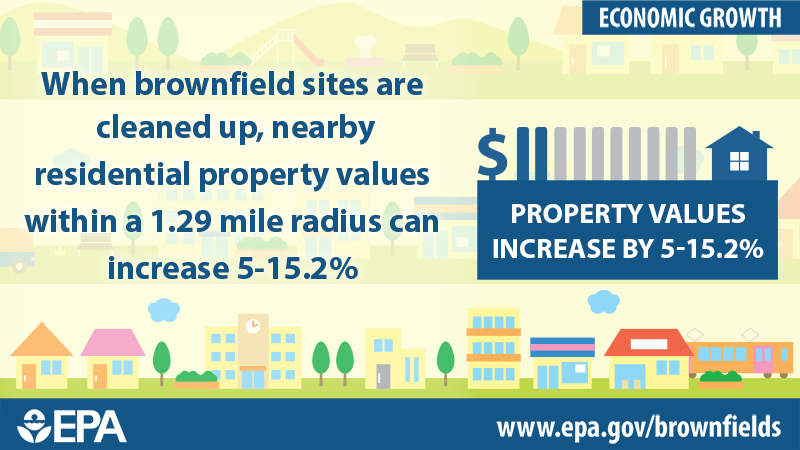Brownfields Program Environmental and Economic Benefits
EPA’s Brownfields program empowers states, communities, and other stakeholders to work together to prevent, assess, safely clean up, and sustainably reuse brownfields. Revitalizing brownfield sites creates benefits throughout the community.
Through fiscal year 2020, on average, $20.13 was leveraged for each EPA Brownfields dollar and 10.3 jobs leveraged per $100,000 of EPA brownfields funds expended on assessment, cleanup, and revolving loan fund cooperative agreements.
Brownfield sites tend to have greater location efficiency than alternative development scenarios. Results of five pilot studies show a 32 to 57 percent reduction in vehicle miles traveled when development occurred at a brownfield site rather than a greenfield. Fewer vehicle miles traveled means a reduction in pollution emissions including greenhouse gases. These same site comparisons show an estimated 47 to 62 percent reduction of stormwater runoff for brownfield site development.
A 2017 study concluded that cleaning up brownfield properties led to residential property value increases of 5 - 15.2% within 1.29 miles of the sites.1 Analyzing data near 48 of those brownfields, another study found an estimated $29 to $97 million in additional tax revenue for local governments in a single year after cleanup—2 to 7 times more than the $12.4 million EPA contributed to the cleanup of those brownfields.2 Initial anecdotal surveys indicate a reduction in crime in recently revitalized brownfields areas.
Opportunity to expand the assessment program and leverage funds and jobs has increased. Policy clarification allows the use of site assessment dollars for environmental assessments in conjunction with efforts to promote area-wide planning around brownfield sites. The use of funds for these purposes is particularly important in economically distressed areas. In certain instances, where assessments reveal immediate threats to the environment or human health, EPA could implement a more programmatic use of removal funds.
1 Haninger, K., L. Ma, and C. Timmins. 2017. The Value of Brownfield Remediation. Exit Journal of the Association of Environmental and Resource Economists 4(1): 197-241.
2 Sullivan, K. 2017. Brownfields Remediation: Impact of Local Residential Property Tax Revenue, Exit Journal of Environmental Assessment Policy and Management 19(3).





